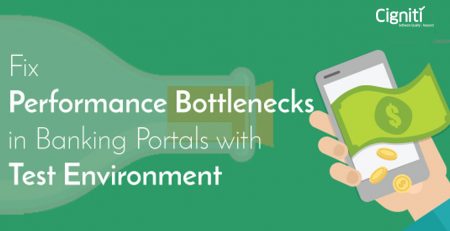The Multiple Dimensions of Performance Testing In E-Commerce
|
Listen on the go!
|
This year, Flipkart, India’s largest E-Commerce company, briefly encountered issues yet again as its Big Billion Day sale progressed. The payment gateway was down, albeit briefly, and consumers could not finalize their purchases. One year ago, in its attempt to limit access only via the mobile application, Flipkart’s sale began with application crashes due to unknown reasons. Two years ago, on the day of the Big Billion Day sale, Flipkart’s customers could not properly access the website due to slow server access. Read our blog post explaining the issue.
All websites, big or small, have downtime, and there are disruptions, however negligible. Be it payment gateway downtime, app crashes or server issues, the fact of the matter is, when the load gets heavy or the traffic is pouring in, website applications and mobile applications tend to face severe performance issues. How websites prepare for such mishaps and their general up-time is what varies.
Performance testing and monitoring helps derive insights to improve the overall performance.
E-commerce plays a huge role in the daily lifestyle of its customers. Shopping is nowadays seldom about intended purchase and is all the more about customer experience. Convenience and variety are a major part of the said customer experience. According to a report released by Forrester a few years ago, the growth rates of rapidly growing mature e-commerce markets of China and India were predicted to be 25% and 57%, respectively, by the end of 2016.
The Forrester report titled, “TRENDS IN INDIA’S E-COMMERCE MARKET” which was published in August 2012, talks about how the trend of online shopping is catching fast, and how many upper- and middle-class consumers are looking to avail the benefits of online grocery shopping. The report goes on to further add that, while large retailers are looking to build a dominating online presence, consumers have a specific set of expectations. In order to deal with the expectations, localization would be key. One of the localization factors was payment options. The report points out that, while online payments were then only beginning to gain popularity, failure and inconsistencies of payment gateways still amounted to a staggering 35% failure rate. A collaborative effort would help customers avail alternate payment methods, therefore allowing them to complete their purchase. This would help the E-Commerce company generate more revenue, and would greatly help them hold on to their first-time consumers.
Some might still say that downtime may be good news for any e-commerce company. It indicates incredible accomplishment in charming the customers and stakeholders including vendors, back-end IT teams and marketing units. This is a sign that the business is heading in the right direction. Only, the performance of the IT systems has to be continually reinforced to match the ‘difficult to predict’ user activity.
Fail Safe Performance Testing has become a mandate for any business environment that succeeds during heavy volume transactions around-the-clock, or during peak seasons. It is palpable that the demand for a dependable and exceedingly scalable system is growing exponentially for IT driven verticals. Adding to this, customers are now less tolerant and excessively vocal on social networks by sharing poor buying experience with screenshots and enraged reviews. Naturally, this has a huge impact on the brand reputation and the perceived quality of the product.
Performance testing undertakes multiple dimensions in E-commerce. Performance testing should be done in a layered approach that is manageable and at the same time, delivers a comprehensive coverage in the case of such a complex system. Big distributed systems cannot be fully tested on a UAT environment. There are numerous stages of testing spanning over a range of resources, speeds, and fidelity to a production system. For example, a typical large system might consist of thousands of various servers,
front-end website applications, API servers, internal services, and various databases. Such systems might process quite a few terabytes of data daily, and their storage is measured in petabytes. They are constantly hit by innumerable clients and users. It is challenging to reproduce all this on a UAT environment.
Large-scale distributed systems are ever-prevalent due to the development of social networks and web applications. Testing of large-scale distributed systems is not particularly straight-forward, as there is much more testing, beyond the traditional testing methods. Realistic usage patterns and extreme loads are essential to get accurate results.
Traditionally, the performance testing approach usually follows the following procedure:
- Key Scenarios Identification
- Load Environment Setup
- Scripts Designing
- Load Generation
- Monitoring, and
- Reporting
It works for most systems, but the scenario wholly differs when conducting performance testing of large-scale distributed systems. It is essential for Technology stakeholders and Business leaders to take a look at performance from a changed viewpoint. For instance, Flipkart is now setting up data centers to handle the excessive in-flow of traffic for days like the ones it has witnessed during its Big Billion Day sale traffic.
E-Commerce companies need to work with different partners to digitally strategize their businesses and ensure that they continue to delight consumers with their products and services. Among all business partners, software testing service providers play a massive role in ensuring that performance is monitored and potential bugs are fixed immediately. Testing needs to be in the form of continuous integration, so that websites and mobile applications can deliver services as guaranteed. In the age of DevOps, Quality Assurance is incorporated in all stages of the software life cycle and dedicated collaboration from cross-functional teams is required to design seamless software.
Cigniti’s IP proprietary, BlueSwan, helps predict and address performance issues dynamically. With the ability to analyze data from prescriptive, descriptive, diagnostic and predictive viewpoints, and by delivering automation scripts, workflow processes and product accelerators, BlueSwan is a comprehensive platform for testing services. Read more about BlueSwan here.
In Conclusion:
Cigniti Technologies incorporates performance engineering as part of its solutions. It uses Frameworks designed after several years of research by its experienced testers. Cigniti’s experts are seasoned in performance testing due to having dealt with diverse applications, businesses, and technologies. Cigniti built a dedicated Center of Excellence (TCoE) for Performance Testing in order to produce performance testing value creators. Our performance testing consultants understand systems, networks and software architecture.
In addition, Cigniti has created ready-to-use test accelerators and solutions across different platforms in the retail domain, leveraging Digital and Retail Test Center of Excellence and Domain Competency Group (DCG). These accelerators can reduce testing struggles as early as from the very first day of engagement. Cigniti’s automated
end-to-end testing services in retail, is focused on POS, Merchandising, CRM, and WMS. It essentially augments the user experience in stores and eventually contributes to improved sales and profitability. To know more about Cigniti’s testing services, you can get in touch with experts through the company website.





Comment (1)
Outstanding article, thanks and we want more! Added you to FeedBurner. 🙂